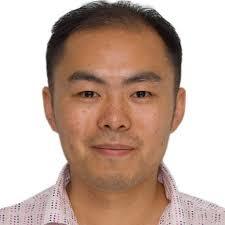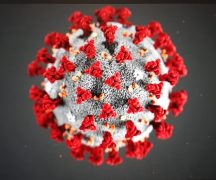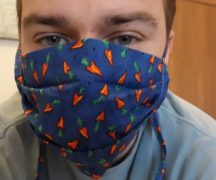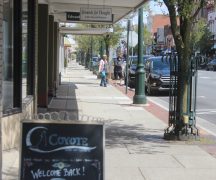From BGSU OFFICE OF MARKETING & COMMUNICATIONS
Dr. Xiaohong Tan, an assistant professor of chemistry at Bowling Green State University, has an idea to prevent coronaviruses from infecting humans. His idea merited the National Science Foundation’s approval for a one-year, $200,000 grant to fund his research.

(BGSU photo)
Tan, who is in his first year at BGSU, plans to develop novel molecules that inhibit the coronavirus from infiltrating human cells. He said his group hopes to design, synthesize and characterize inexpensive chemicals that can keep the coronavirus from infecting humans. He believes the research will result in a more cost-effective and quicker process than using actual antibodies to combat the virus.
In late March as the news about COVID-19 became more serious in Ohio, Tan wondered how he could use his nucleic acid biochemistry expertise to design a kit to detect the virus. He quickly realized that there were already many commercial products available, so he changed directions and thought he could do something to prevent the coronavirus.
“Though antibodies are a good choice to potentially prevent infection by the coronavirus, they are expensive,” Tan said. “I thought, if we can find some inexpensive alternatives, that would be excellent.”
With the help of Dr. Malcolm Forbes, director of the Center for Photochemical Sciences, and Dr. John Cable, chair of the chemistry department, Tan’s idea was finessed and the proposal sent to NSF on April 1. By the afternoon of April 16, NSF sent its approval for the grant.
And almost as quickly, the research will begin. The grant starts May 1 and runs for one year.
“I will work with one post-doctoral student and two to three Ph.D. students in the lab and be sure to follow all of the BGSU (social distancing and safety) rules,” Tan said.
He expects to be ready for the final steps within 10-11 months. With the help of Dr. Saurabh Chattopadhyay, an assistant professor at the University of Toledo Medical Center, the final test will be “to see whether it can block the live virus,” Tan said.
Forbes helped to further explain the science behind Tan’s research in a way that would also protect the lab’s intellectual property. He compared the idea to a plastic electrical safety mechanism to keep young children safe at home.
“The virus would be the plug (interface) of a device that needs a source of energy to survive and replicate; the outlet is compared to the human cell receptor (the other half of the interface),” Forbes said.
The end product of Tan’s research could be a product that, like the plastic safety mechanism that blocks access to the energy source, would prevent the coronavirus from infecting humans.
Tan estimates the difference in cost between his innovation and real antibodies might be $10 compared to $300. Once perfected, his chemical antibodies should be able to be replicated in half a day, compared to several weeks for antibodies.
When Tan first shared his idea, Forbes knew it was an idea worth pursuing.
“I know good science when I see it,” Forbes said. “I thought the idea was good, easy to understand and the description of the research plan was very well organized.”
That probably contributed to the speed at which the NSF reviewed and approved the grant request through the Rapid Response Research funding mechanism.
“This is an indication of how serious the issue is and how important it is to get scientists in the lab working on these problems,” Tan said.
Forbes, who previously worked at the NSF and was familiar with the agency’s approval process said, “It was a rather incredible job by the NSF to get this funded so quickly.”
Another benefit with the grant is that the agency allows 90 days of pre-spending, which should allow Tan’s group to start their research on May 1 without waiting for equipment and materials.
Tan hopes this research serves as a platform for future funding proposals.
“If any part of this works, it’s going to give a lot of other people motivation about how to tackle the problem,” Forbes said.
With a COVID-19 vaccine as a high priority for scientists, Tan said his research will still be viable because it should lead to solutions for other coronaviruses, not just for COVID-19.
“I believe at this moment we really want to find a way to control this virus spread and we should do whatever we can to solve the current problem,” he said.
“That’s my passion for this project and I plan to work with my group here at BGSU with the hope of making a contribution for science and society.”





